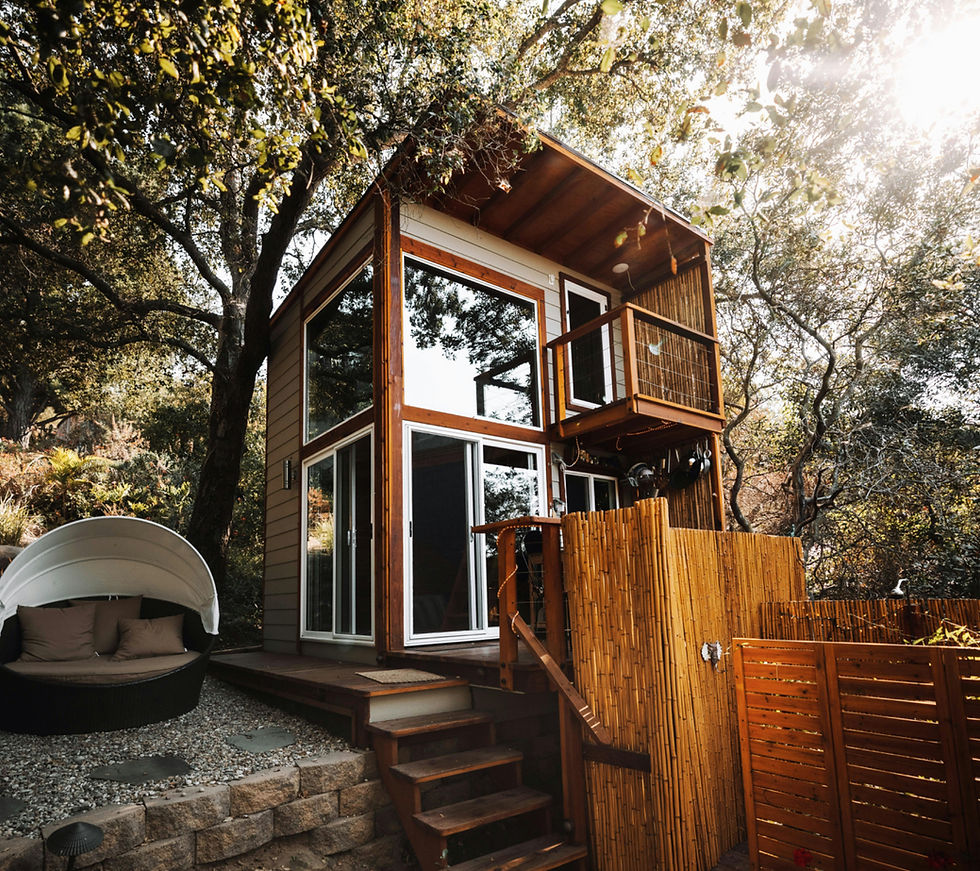Box Spring vs Foundation: Which one is Right for You?
- Tatiana Olin
- Aug 6, 2022
- 4 min read
Updated: May 6, 2024
Replacing the mattress on your treasured antique bed frame can breathe new life into your sleep haven. But before you dive into plush comfort, there's a crucial decision to make: choosing the right foundation or box spring.
Understanding the key differences between these two support systems is essential for maximizing your mattress's lifespan and ensuring optimal comfort. This guide will equip you with the knowledge to select the perfect base for your one-of-a-kind 3/4 mattress. You can avoid the headaches of buying a mattress that just doesn't meet your needs.

Box Springs are A Supportive Choice for Traditional 3/4 Mattresses
For owners of antique bed frames, box springs offer a familiar and functional foundation for your mattress. Traditionally designed to support innerspring mattresses, box springs provide a balanced combination of comfort and durability.
Key features of box springs:
Construction: A box spring typically consists of a wooden frame encased in fabric, with an interior network of metal coils for added support.
Compatibility: While ideal for innerspring mattresses, box springs may not be suitable for some modern options like memory foam. Consult your mattress manufacturer's recommendations for optimal support.
Customization: Box springs often come in various heights, allowing you to adjust your bed's overall elevation. This can be particularly beneficial for those with mobility challenges, making it easier to get in and out of bed.
Budget-friendly: Box springs are generally less expensive than platform foundations. In a pinch, a box spring can even be used without a bed frame, offering a temporary solution.
Things to Consider for Antique Beds:
Size: Ensure your chosen box spring matches the exact dimensions of your 3/4 size antique bed frame for a seamless fit.
Support Needs: If your antique bed frame has slats or other built-in support, a box spring might not be necessary.
Box Spring Considerations Have Potential Drawbacks for Antique Beds
While box springs offer valuable support for traditional innerspring mattresses, there are some factors to consider, particularly for antique bed frames:
Compatibility Issues: Modern memory foam and latex mattresses often perform poorly on box springs. Their conforming properties can be hindered by the springy nature of a box spring, potentially leading to uneven support and a less comfortable sleep experience.
Limited Lifespan: Box springs have a finite lifespan. Over time, the metal coils can weaken and lose their supportive qualities. This can contribute to sagging and uneven sleep surfaces, especially on antique bed frames that might lack additional support features.
Potential for Noise: As box springs age, the metal coils can become loose and creaky, leading to unwanted noise when getting in and out of bed. This can be particularly disruptive in a quiet bedroom.
Height Concerns: Box springs can add significant height to your bed. While some users appreciate the raised elevation, it might not be ideal for antique beds with high headboards or those with mobility limitations.
Alternative Support Options for Antique Beds:
For situations where a box spring might not be the best choice, consider these alternatives for your 3/4 size antique bed frame:
Solid Wood Foundations: These offer a firm, level surface that works well with various mattress types, including memory foam and latex.
Platform Beds: Some antique bed frames can be adapted for use with a platform bed frame, eliminating the need for a separate foundation altogether.
Box Spring Can be Noisy and Not as Versatile
Pros:
Financially friendly
Stable support
Sagging prevention
Raised mattress of the ground
Cons:
Not compatible with latex or foam mattresses
Potential wear and tear or breakage
Squeakiness
Foundations are A Stable Choice for Modern Mattresses
Foundations offer a modern and versatile alternative to box springs, particularly for owners of antique bed frames with specific needs. Here's why foundations might be the perfect fit for your 3/4 bed:
Solid Support: Unlike box springs that utilize coils, foundations offer a firm, level surface ideal for modern mattresses like latex and memory foam. These mattresses rely on a consistent base for optimal pressure relief and proper spinal alignment.
Durability: Constructed from solid wood or metal, foundations are built to last. They are less susceptible to wear and tear compared to box springs with their network of coils, potentially saving you money in the long run.
Space-Saving Potential: Some foundations can be used directly on the floor, eliminating the need for a separate bed frame. This can be a great space-saving solution for smaller bedrooms.
Low Profile Design: Foundations typically maintain a low profile similar to box springs, allowing you to retain the classic aesthetic of your antique bed frame.
Things to Consider for Antique Beds:
Compatibility: Not all antique bed frames require a foundation. If your bed frame features built-in slats for support, a foundation might be unnecessary.
Size Customization: Foundations come in various sizes, so ensure you choose one that perfectly matches the dimensions of your 3/4 size antique bed frame.
Foundations can be a little heavier. Also, foundations are typically much firmer and lack the give of a box spring.
Foundations Are a Reliable Choice
Pros:
Extra support
Does not break down over time easily
Compatible with all mattress types, but great for foam and latex
Last longer
Cons:
Heavier weight
Greatest Difference between Box Springs and Foundations
While both have their pros and cons, we highly recommend a foundation over a box spring. If you’re looking for a new 3/4 mattress for your antique bed, you can find them online in our showroom today.



Check out this furniture sale Lahore for unbeatable prices on stylish pieces.